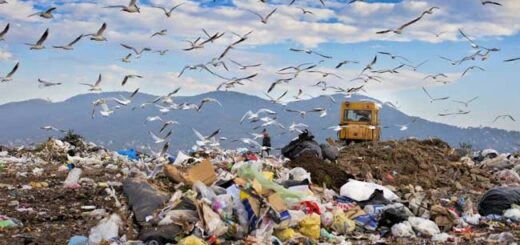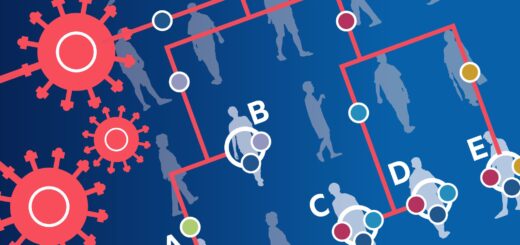National Current Affairs – UPSC/KAS Exams- 26th March 2019
Chandrayaan 2
Topic: Science and Technology
In News: India’s lunar mission Chandrayaan 2, scheduled to launch next month, will carry NASA’s laser instruments that help scientists to make precise measurements of the distance to the Moon.
More on the Topic:
- Chandrayaan-2 is India’s second lunar exploration mission after Chandrayaan-1.Developed by the Indian Space Research Organisation (ISRO), the mission is planned to be launched to the Moon by a Geosynchronous Satellite Launch Vehicle Mark III (GSLV Mk III). It includes a lunar orbiter, lander and rover, all developed by India
- Chandrayaan-2 is scheduled to launch in April 2019 and will attempt to soft land a lander and rover in a high plain between two craters, Manzinus C and Simpelius N, at a latitude of about 70° south. If successful, Chandrayaan-2 will be the second mission to land a rover near the lunar south pole.
- According to ISRO, this mission will use and test various new technologies and conduct new experiments. The wheeled rover will move on the lunar surface and will perform on-site chemical analysis. The data will be relayed to Earth through the Chandrayaan-2 orbiter, which will piggyback on the same launch.
Model Mains Question: Analyse India’s progress in space technology in the last two decades.
Source: The Hindu
Chinook heavy-lift helicopters
Topic: Science and Technology
In News: The Indian Air Force (IAF) recently inducted the first batch of four Chinook CH-47F(I) heavy-lift helicopters, which will significantly improve airlift to high-altitude areas.
More on the Topic:
- The induction of Chinook will be a game changer. This modern, multi-mission-capable, heavy-lift transport helicopter will enhance our heli-lift capability across all types of terrain to the full effect.
- The service ceiling of 20,000 feet would redefine heavy lift not just in operations but also for inter-valley transport and the artillery.
- These helicopters will be deployed in northern and eastern regions.
- The Chinook CH-47F(I) heavy-lift helicopters can carry a maximum payload of 11 tonnes and 54 combat-ready troops or 24 stretcher patients. The Army’s recently inducted M-777 Ultra-Light Howitzers can also be carried to forward areas.
- This will significantly improve the rapid reaction capabilities along the western and eastern borders.
Source: The Hindu
PSLV-C45 project
Topic: Science and Technology
In News: For the sheer number of ‘firsts’ to its credit, the PSLV-C45/Emisat mission scheduled for an April 1 lift-off from Sriharikota will be a memorable one for the Indian Space Research Organisation (ISRO).
More on the topic:
- For one, it will be ISRO’s first attempt at placing payloads in three different orbits. The chief payload — the 436 kg Emisat — will be injected into a 749 km orbit. After that, the fourth stage of the rocket will be manoeuvred to a 504 km orbit for releasing 28 international satellites.Once that job is over, the fourth stage will be restarted and guided to an altitude of 485 km.
- For the next six months, this stage will serve as an orbital platform for space-based experiments. This is another first for the ISRO. Normally, the spent stage simply becomes space junk.
- The orbital platform will also sport solar panels, which too is a first. But that’s not all: the launch vehicle itself is a new variant, designated PSLV-QL. For the first time, ISRO will be employing four XL strap-on motors on the first stage.
- The PSLV-C45 mission marks a milestone for ISRO’s Indian Institute of Space Science and Technology (IIST). One of the three experiments aboard the orbital platform is the IIST’s Advanced Retarding Potential Analyser for Ionospheric Studies (ARIS).ARIS will study the structure and composition of the ionosphere.
- The other two experimental payloads aboard the orbital platform are the Automatic Identification System (AIS), an ISRO payload for maritime satellite applications, and the Automatic Packet Repeating System (APRS), meant to assist amateur radio operators.
Source: The Hindu
Indian Accounting Standards (Ind AS)
Topic: Economy
- In News: The Reserve Bank of India (RBI) has deferred the implementation of new accounting rules, Indian Accounting Standards (Ind AS) for banks till further notice.
More on the Topic:
- This is the second extension provided by the RBI. Earlier in April 2018, RBI had postponed the implementation of Ind AS by the banks by one year.
- The new rules based on the IFRS9 standards created in the aftermath of the financial crisis were supposed to kick in at the start of the new fiscal year that starts on April 1, after being delayed last year.
- According to Fitch Ratings’ local unit, India’s state-run lenders would have had to increase provisions by as much as 1.1 trillion rupees ($16 billion) in the fiscal first quarter ending June 30 if the rules had gone ahead.
- That would have forced public sector lenders to raise “substantial” amounts of extra capital, beyond the estimated 1.9 trillion rupee infusion already committed by the government.
About Indian Accounting Standard:
- Indian Accounting Standard (abbreviated as Ind-AS) is the Accounting standard adopted by companies in India and issued under the supervision of Accounting Standards Board (ASB) which was constituted as a body in the year 1977.MCA has to spell out the accounting standards applicable for companies in India.
- The implementation of IndAS for public sector banks requires an amendment to the Banking Regulation Act. The schedule in BR Act relating to financial statement disclosures needs to be changed to the IndAS format.
- Section 29 of the BR Act deals with the accounts and balance sheets of public sector banks. Private sector banks are covered by the Companies Act, which is based on the new accounting standards.
Source:The Hindu
GRAPES-3 muon telescope facility
Topic: Science and Technology
In News: For the first time in the world, researchers at the GRAPES-3 muon telescope facility in Ooty have measured the electrical potential, size and height of a thundercloud that passed overhead on December 1, 2014.
More on the Topic:
- Learning about the properties of thunderclouds can be useful in navigation of aircraft and preventing short circuits.
- GRAPES-3 is designed to study cosmic rays with an array of air shower detectors and a large area muon detector.
- It aims to probe acceleration of cosmic rays in the following four astrophysical settings. These include acceleration of particles to, (i) ~100 MeV in atmospheric electric fields through muons, (ii) ~10 GeV in the Solar System through muons, (iii) ~1 PeV in our galaxy, (iv) ~100 EeV in the nearby universe through measurement of diffuse gamma ray flux.
- The observations began with 217 plastic scintillators and a 560 m2 area muon detector in 2000. The scintillators detect charged particles contained in extensive air showers produced by interaction of high energy cosmic rays in the atmosphere.
About Muons:
- Muons and other particles are produced when cosmic rays bombard air particles surrounding the earth. The muons produced can have positive or negative charge. When a positively charged muon falls through a cloud, it loses energy. If its energy falls below 1 giga electron volt (GeV), which is the threshold of detection of the GRAPES-3 muon telescope, it goes undetected.
- On the contrary, a negatively charged muon gains energy when falling through the cloud and gets detected. Since there are more positive than negative muons produced in nature, the two effects don’t cancel out, and a net change in intensity is detected.
Source: The Hindu
EMISAT
Topic: Science and Technology
In News: The Indian Space Research Organization (ISRO) is about to launch an electronic intelligence satellite EMIAT for Defense Research and Development Organization (DRDO).
More on the Topic:
- Polar Satellite Launch Vehicle will be used to put the 436 kg EMISAT into a 749-km orbit.
- The satellite will identify the exact topography of enemy areas and find out how many communication devices are active in the area and also helps India to keep an eagle eye on hostile nations.
- This is not the first time ISRO is launching satellite for DRDO earlier ISRO has launched Microsat-R which was developed by DRDO.
Source: The Hindu
Shaheed Diwas
Topic: Modern India
In News: Shaheed Diwas is observed on March 23 to commemorate the sacrifice made by three freedom fighters.
More on the Topic:
- On March 23, 1931, the three young revolutionaries namely Bhagat Singh, ShivaramRajguru and SukhdevThapar were hanged by the British for allegedly killing the then Assistant Superintendent of Police John Saunders in Lahore in 1928.
- Bhagat Singh stood out for his bravery and exceptional patriotism and for his contribution to India’s independence from the British colonial rule.
Source: The Hindu


















